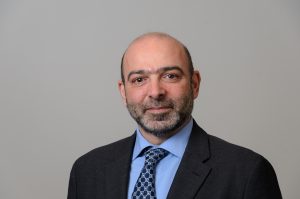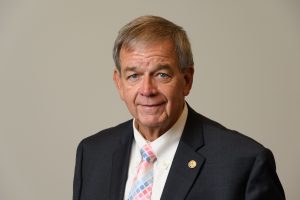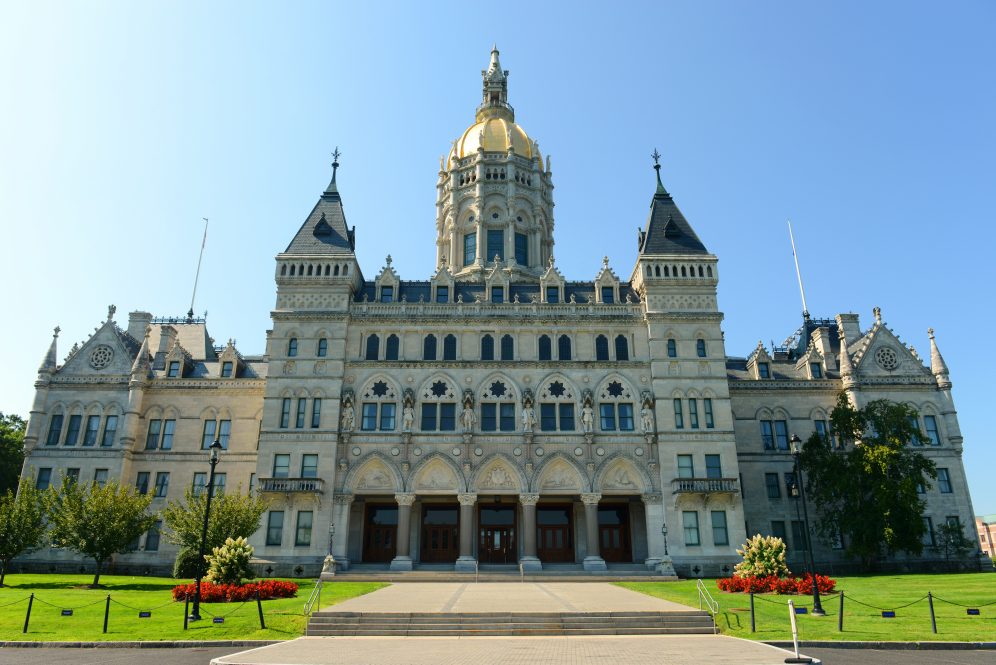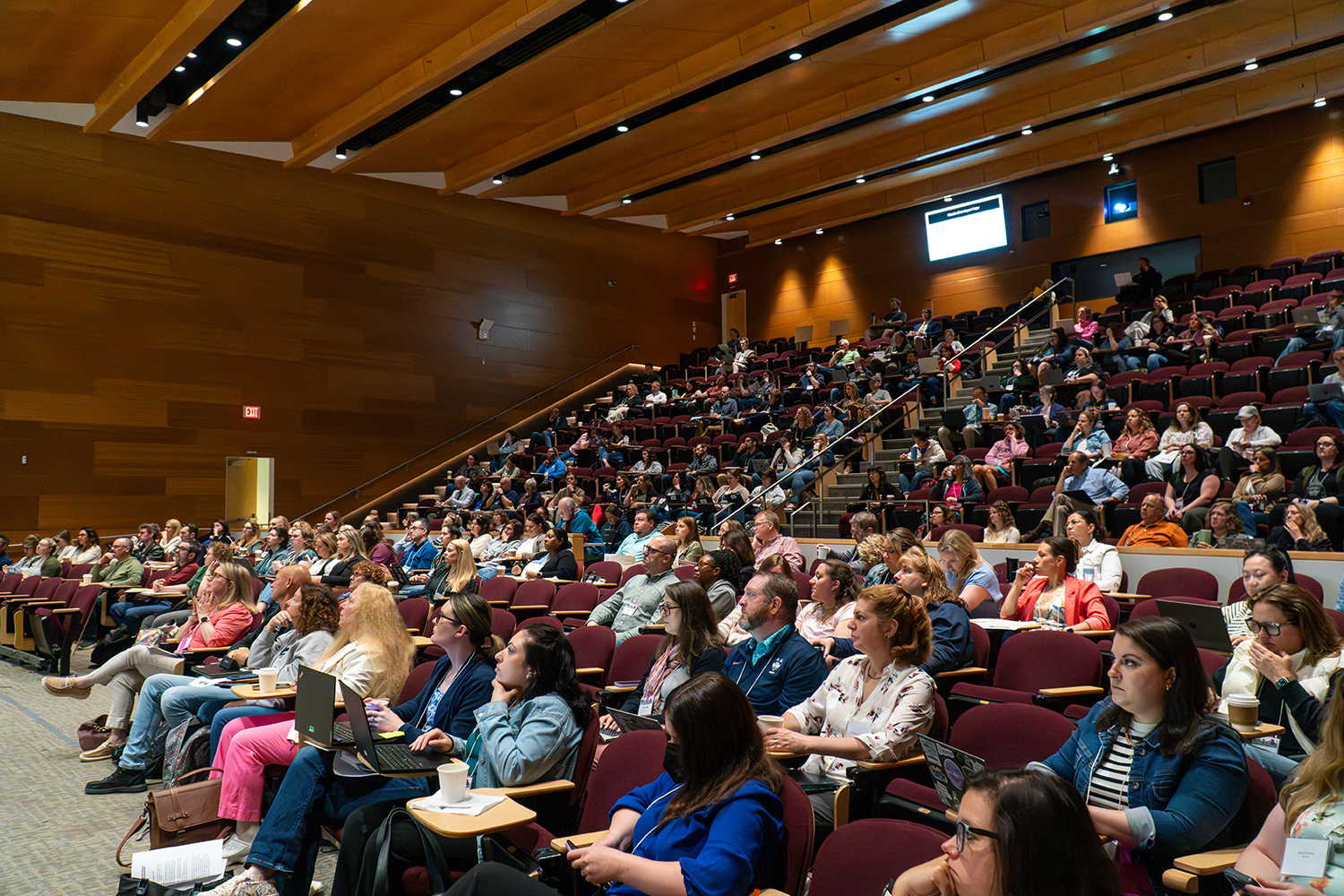Legislators will convene the next session of the General Assembly today, and as they get to work, many with ties to UConn will offer influence, insight, and information during discussions on what may end up being among the major bills this year.
“It’s no secret that UConn is the biggest game in town at the Capitol; it’s the state’s flagship university and people pay attention when its representatives speak,” says Andrew Clark, director of the Institute for Municipal and Regional Policy (IMRP) in the University’s Department of Public Policy. “Many legislators have graduated from UConn, many have gone to UConn Law, so there’s a definite pride in the institution and wanting to see it succeed. Its presence is always there.”
This session will be no different, especially when, as suggested by the Office of Legislative Research’s annual Major Issues report, the legislature considers taking up bills on juvenile justice, education, and workforce development. It may even circle back to one that made headlines last year, when elected leaders funded the removal of the John Mason statue from the Capitol façade – just not enough funding to get the job done.
What promises to be high on the legislature’s priority list are packages that react to a rise in motor vehicle thefts by juveniles and overall juvenile justice reforms – two topics many elected officials over the last year have pledged to raise, and on which Republicans last week said they wanted bipartisan consensus.
“There’s been a significant decrease in motor vehicle thefts in most of the major cities, and the increase that many people are talking about is in the smaller towns,” says Clark. “Those smaller towns have a large voice in the political sphere.”
The IMRP, which moved to UConn Hartford in October after the legislature last year shifted its affiliation from Central Connecticut State University, works as a nonpartisan group to bring together scholars, policymakers, practitioners, and the community to share information and perspectives on public policy issues.
It’s no secret that UConn is the biggest game in town at the Capitol; it’s the state’s flagship university and people pay attention when its representatives speak. — Andrew Clark, Director of the Institute for Municipal and Regional Policy
As administrator of the state’s racial profiling law, the Alvin W. Penn Racial Profiling Prohibition Act, it tracks traffic stops and police enforcement on behalf of the state Office of Policy and Management. It also staffs the State Sentencing Commission and Police Transparency and Accountability Task Force, Clark says.
Because it has intimate knowledge of Connecticut’s law enforcement and justice systems, Clark says, legislators look to it as a source of expertise for data on which they can base decisions.
Together with UConn’s Department of Public Policy, the IMRP hosted three sessions last fall on youth car thefts, drawing a collective virtual audience of 750 to talk about the problem, perceptions, and solutions.
“The Department of Public Policy is thrilled to have partnered with the IMRP and others to provide a forum for such an important discussion,” Mohamad Alkadry, head of the Department of Public Policy in the College of Liberal Arts and Sciences, says. “Youth car thefts and juvenile justice are important issues, and we want to continue to provide the space for these deliberations.”

Alkadry sits on the state’s Task Force to Study the State Workforce and Retiring Employees, which has provided legislators input on the wave of retirements expected prior to July 1 because of changes to pension calculations affecting state retirees after that date.
Some 8,000 Executive Branch workers are eligible for retirement before the end of the current fiscal year, and the state comptroller’s office expects about two-thirds, or 5,800, to take advantage. This does not include staffers in higher education or the Judicial Branch, which are expecting a similar percentage of retirements, Alkadry says.
Alkadry and Assistant State Comptroller Tara Downes also reported last month to the Governor’s Council on Women and Girls on the discrepancy in the number of minorities holding key positions in state government and the differences in pay for these groups.
“We found that state agencies that have always done well in terms of representation of women and people of color ended up continuing to do well, and those that have not done well, continued to not do well among new hires,” Alkadry says. “When we looked at the last five years of hires, the last three years of hires, and the last year of hires, state agencies have continued their patterns.”
What he hopes to impress upon state executive and legislative officials this session is that the coming wave of retirements offers an opportunity to correct imbalances of representation in certain agencies and departments.
“An organization that loses a fifth or a quarter of its workforce over such a short period of time should always reconsider reorganizing to be more agile, no matter how agile the current workers are. This is a golden opportunity for the state to upgrade its workforce and at the same time address any existing representation imbalances,” he says.
Connecticut Education Association President Kate Dias ’97 MS, 6th Year is focusing her attention on the educational workforce, and hopes the session will yield approvals of public acts addressing educators, namely better working conditions and recruitment and retention of teachers.
The group started reaching out to legislators weeks before the session, Dias says, offering itself as a resource for questions or topic temperature checks in advance of any bill packages that may come out over the next few weeks.
“We have an ambitious agenda and it’s a short session,” the Neag School of Education alumna says, referring to the three-month session that will adjourn May 4. “We’re really working to get legislators to take up the issues of teacher retention, school air quality, standardized testing, even something as basic as lunch break allowances for teachers, many of whom are being asked to regularly cover other vacancies during their lunch times. If we don’t do something dramatic, I fear for what happens to Connecticut’s educational system. This is a slow burnout that’s really harming our educators.”
She notes that many of the group’s current goals aren’t new and have been at the forefront of leaders’ minds for many years, becoming heightened among the general public only during the pandemic.
“The pandemic has accelerated the sense of urgency on many of these issues, because the pandemic is a very personal thing. It’s amazing how many people used to drop off their child at a school that has poor ventilation and never think twice about it. Now, the consequences hit home. It’s not just a question of whether that child is going to be uncomfortable in a poorly ventilated building during the day, it’s a question of whether they’re going to bring home a virus to vulnerable family members.”
While the legislature may grapple with these ongoing educational issues, it also may take up one that leaders may have thought was settled last session.

UConn associate professor of history Walter Woodward, who as State Historian sits on the State Capitol Preservation and Restoration Commission, explains that even though funding was allocated during the 2021 session to remove the John Mason statue from the façade of the Capitol’s north portico, not enough money was appropriated.
The General Assembly reasoned that because Mason is responsible for the near eradication of the Pequot tribe during the Mystic Massacre in 1637, he no longer deserves a place of prominence on the Capitol façade. He had been memorialized in statue as one of the founders of the colony of Connecticut and for serving as its first military leader.
Woodward explains that because it will cost more than $50,000 to do the work, either the House or Senate minority leader needs to join with the four Democratic leaders of the two chambers to give their approval.
Neither has moved to do so, Woodward says.
The preservation commission also hasn’t come to agreement on whether to recommend its removal, instead sending three recommendations to the legislature in December: form a task force to come up with a program to teach people about Connecticut’s past, leave it in place, and remove and relocate it.
“There should be a committee formed by the legislature that would include historians and people from around the state to talk about all of the statuary on the state Capitol and think about how that statuary is telling the story of the state of Connecticut. Rather than take an individual approach that continues the story of good guy versus bad guy, there should be a comprehensive review of how to use the building as the state’s visual history book,” Woodward says.



